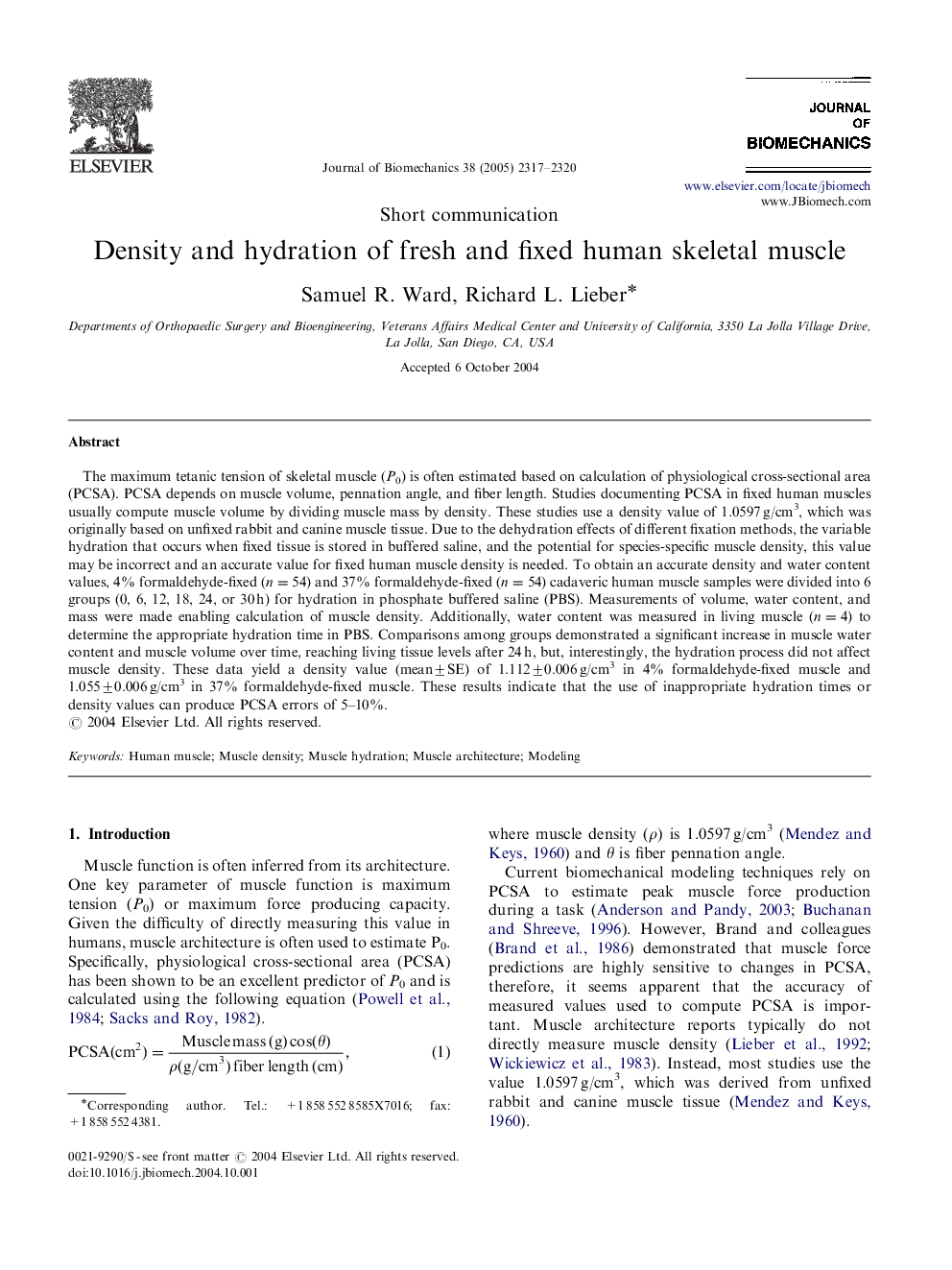| کد مقاله | کد نشریه | سال انتشار | مقاله انگلیسی | نسخه تمام متن |
|---|---|---|---|---|
| 875575 | 910405 | 2005 | 4 صفحه PDF | دانلود رایگان |

The maximum tetanic tension of skeletal muscle (P0) is often estimated based on calculation of physiological cross-sectional area (PCSA). PCSA depends on muscle volume, pennation angle, and fiber length. Studies documenting PCSA in fixed human muscles usually compute muscle volume by dividing muscle mass by density. These studies use a density value of 1.0597 g/cm3, which was originally based on unfixed rabbit and canine muscle tissue. Due to the dehydration effects of different fixation methods, the variable hydration that occurs when fixed tissue is stored in buffered saline, and the potential for species-specific muscle density, this value may be incorrect and an accurate value for fixed human muscle density is needed. To obtain an accurate density and water content values, 4% formaldehyde-fixed (n=54n=54) and 37% formaldehyde-fixed (n=54n=54) cadaveric human muscle samples were divided into 6 groups (0, 6, 12, 18, 24, or 30 h) for hydration in phosphate buffered saline (PBS). Measurements of volume, water content, and mass were made enabling calculation of muscle density. Additionally, water content was measured in living muscle (n=4n=4) to determine the appropriate hydration time in PBS. Comparisons among groups demonstrated a significant increase in muscle water content and muscle volume over time, reaching living tissue levels after 24 h, but, interestingly, the hydration process did not affect muscle density. These data yield a density value (mean±SE) of 1.112±0.006 g/cm3 in 4% formaldehyde-fixed muscle and 1.055±0.006 g/cm3 in 37% formaldehyde-fixed muscle. These results indicate that the use of inappropriate hydration times or density values can produce PCSA errors of 5–10%.
Journal: Journal of Biomechanics - Volume 38, Issue 11, November 2005, Pages 2317–2320